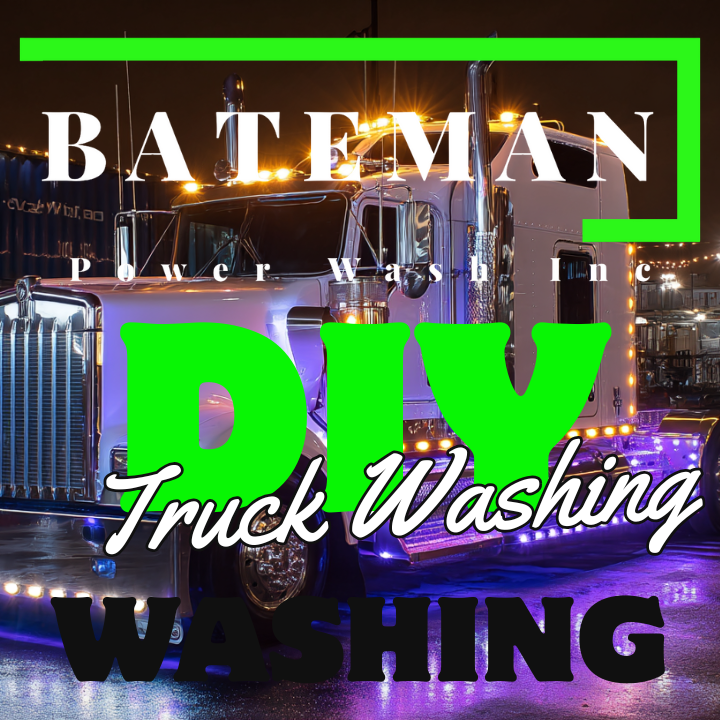Table of Contents
- Introduction: Why Commercial Trucks Need Regular Washing
- Essential Equipment & Tools Checklist
- Choosing the Right Detergent (And What to Avoid)
- Pressure Washer Settings: PSI, GPM, Nozzles Explained
- Prepping the Work Area: Safety & Protection Measures
- Step-by-Step Process to Pressure Wash Commercial Trucks
- Troubleshooting Common Truck Issues (Bug Splatter, Grease, Road Film)
- Post-Cleaning Treatments for Long-Lasting Results
- Advanced Tips: Speed, Technique, and Avoiding Damage
- Safety Protocols for Technicians
- Maintenance Schedule: How Often Should Trucks Be Washed?
- Client Education: What They Should Know Before & After the Service
1. Introduction: Why Commercial Trucks Need Regular Washing
Fleet vehicles are mobile billboards and workhorses. They accumulate dirt, salt, road grime, grease, and bug splatter daily. If neglected:
- Dirt buildup damages paint and metal components.
- Salt accelerates corrosion.
- A dirty fleet damages your company’s image.
Professional truck washing preserves the fleet’s appearance, extends vehicle lifespan, and maintains DOT compliance.
2. Essential Equipment & Tools Checklist
- Pressure Washer: 3,500 – 4,500 PSI, 5+ GPM (Hot Water Capable preferred)
- Spray Nozzles:
- 40-degree (White Tip) — For delicate rinse
- 25-degree (Green Tip) — General washing
- Soap Nozzle (Black Tip) — For detergent application
- Foam Cannon or Downstream Injector
- Degreaser for engines and undercarriages
- Fleet Wash Detergent (non-corrosive)
- Bug Remover Solution
- Soft Bristle Brush on Extendable Pole
- Water-fed Brush System (optional)
- Garden Hose with Backflow Preventer
- Safety Gear: Safety glasses, gloves, waterproof boots
3. Choosing the Right Detergent (And What to Avoid)
Ideal Detergents:
- Fleet wash soap with surfactants and gloss enhancers.
- Degreaser for undercarriage and engine bays.
- Bug remover for windshields and front grills.
Avoid:
- Acid-based cleaners unless specified for aluminum brightening.
- Strong caustic solutions (can damage paint and decals).
DIY Mix Example:
- 2 Gallons Warm Water
- 1/2 Cup Fleet Wash Detergent
- Optional: 1 Cup Bug Remover for front sections
4. Pressure Washer Settings: PSI, GPM, Nozzles Explained
- PSI:
- Painted Surfaces: 2,000 – 2,500 PSI
- Aluminum/Metal Components: 3,000 – 3,500 PSI
- Chassis & Undercarriage: Up to 4,500 PSI (with caution)
- GPM: 5.0 – 8.0 GPM for efficient fleet washing
- Nozzles:
- 25-degree for general exterior washing
- 40-degree for decals, mirrors, and sensitive areas
- Soap tip for detergent application
5. Prepping the Work Area: Safety & Protection Measures
- Inspect trucks for visible damage (pre-clean inspection).
- Move vehicles to a designated wash zone with drainage.
- Secure ladders or use extension poles for high sections.
- Shut off electrical power to external vehicle outlets.
- Place safety cones around the work area.
6. Step-by-Step Process to Pressure Wash Commercial Trucks
Step 1: Pre-Rinse
- Use 25-degree nozzle to wet entire truck.
- Focus on lower panels and wheel wells to loosen road grime.
Step 2: Apply Detergent
- Use foam cannon or downstream injector to apply fleet wash soap.
- Apply from bottom up to prevent soap runs.
- Let detergent dwell for 5-10 minutes.
Step 3: Agitate Problem Areas
- Use soft-bristle brush on:
- Bug-splattered areas
- Grills and mirrors
- Fuel tanks and wheel hubs
Step 4: High-Pressure Rinse
- Switch to 25-degree nozzle.
- Rinse top to bottom, overlapping each pass.
- Use a 40-degree nozzle on decals and sensitive areas.
Step 5: Undercarriage & Chassis
- Use degreaser on undercarriage and engine bay.
- Rinse thoroughly with higher PSI, keeping wand angle shallow.
7. Troubleshooting Common Truck Issues
| Problem | Solution |
|---|---|
| Bug Splatter Residue | Reapply bug remover, scrub, and rinse |
| Grease/Oil on Chassis | Use degreaser, dwell, and hot water rinse |
| Road Film Haze | Increase detergent concentration |
| Water Spots on Glass | Hand-dry with microfiber or use DI water |
8. Post-Cleaning Treatments for Long-Lasting Results
- Apply a spray wax or gloss enhancer to maintain shine.
- Suggest anti-corrosion undercoating for harsh winter regions.
- Recommend regular maintenance wash schedules.
9. Advanced Tips: Speed, Technique, and Avoiding Damage
- Use a two-man team: One applies detergent, the other follows with rinse.
- Foam cannons improve detergent dwell and reduce soap usage.
- Avoid spraying directly into engine compartments.
- Maintain consistent distance to avoid streaks and etching.
10. Safety Protocols for Technicians
- Wear PPE: safety glasses, gloves, waterproof boots.
- Be aware of slip hazards from soapy water.
- Avoid ladder use when possible; prefer extension poles.
- Maintain safe distance from electrical components and vents.
- Shut down washers immediately if overspray enters sensitive areas.
11. Maintenance Schedule: How Often Should Trucks Be Washed?
| Fleet Usage | Frequency |
| Over-the-road Trucks | Weekly |
| City Delivery Vehicles | Bi-Weekly |
| Seasonal/Utility Vehicles | Monthly |
| Harsh Winter Conditions | After every storm |
12. Client Education: What They Should Know
Before Service:
- Ensure trucks are accessible and ready for washing.
- Close all external vents and compartments.
- Remove sensitive documents or items from cabs.
After Service:
Suggest protective treatments (wax, corrosion inhibitors).
Inspect fleet for missed spots or areas needing touch-up.
Review undercarriage for proper degreasing.
Discuss maintenance packages and wash frequency.

